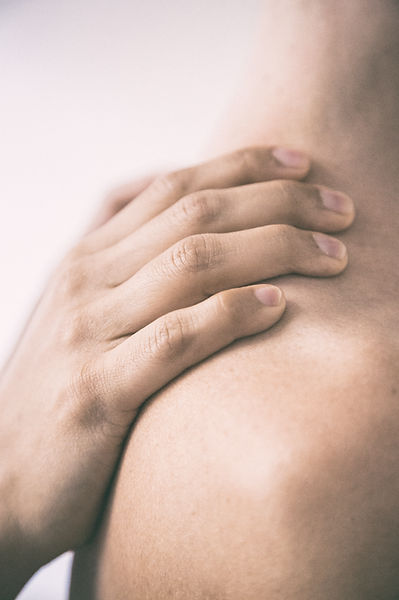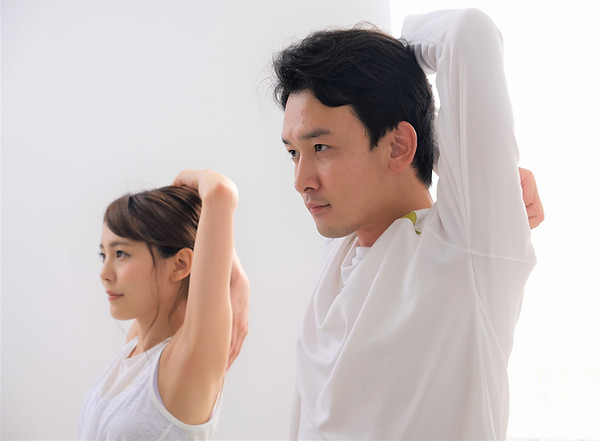Shoulder Pain Relief
Struggling with persistent shoulder pain from a rotator cuff injury, frozen shoulder, or bursitis? At our Fairfax VA clinic we offer effective, gentle treatment for shoulder pain. No drugs - No surgery
Dr. Zapf, M.S., D.C., Chiropractor
Former Associate Professor of Diagnosis at Palmer College of Chiropractic
Don't let shoulder pain hold you back! Take the first step toward relief today. Schedule your consultation now!
Types of Shoulder Pain
Shoulder pain can be debilitating, affecting your ability to perform everyday tasks. Dr. Zapf specializes in treating three common conditions that cause shoulder pain: rotator cuff injuries, frozen shoulder, and bursitis. Understanding the root cause of your pain is the first step toward lasting relief.


1. Rotator Cuff Injury
The rotator cuff is a group of muscles and tendons that stabilize the shoulder joint. Injuries to this area often result from repetitive motions, overuse, aging, or sudden trauma (such as lifting something heavy or falling on an outstretched arm).
Common Causes:
-
Tendonitis (inflammation due to overuse)
-
Tears (partial or full-thickness due to aging or injury)
-
Impingement (tendons pinched between bones)
Symptoms:
-
Dull, aching pain in the front or side of the shoulder
-
Weakness when lifting or rotating the arm
-
Pain that worsens at night or when reaching overhead
2. Frozen Shoulder (Adhesive Capsulitis)
Frozen shoulder occurs when the shoulder capsule thickens and stiffens, limiting movement. It often develops after an injury, surgery, or prolonged immobility and is more common in people with diabetes or thyroid disorders.
Common Causes:
-
Inflammation and thickening of the joint capsule
-
Formation of adhesions (scar-like tissue) restricting movement
-
Lack of shoulder use due to pain or injury
Symptoms:
-
Gradual onset of stiffness and pain that worsens over time
-
Limited range of motion, making it hard to lift the arm
-
Pain that persists even at rest and disrupts sleep


3. Shoulder Bursitis
Bursitis is the inflammation of the bursa, small fluid-filled sacs that cushion the shoulder joint. It typically results from repetitive movements, direct trauma, or prolonged pressure on the shoulder
Common Causes:
-
Overuse from activities like painting, throwing, or lifting
-
Direct trauma or impact to the shoulder
-
Poor posture or muscle imbalances
Symptoms:
-
Sharp pain on the outside or top of the shoulder
-
Increased discomfort when lifting, reaching, or lying on the affected side
-
Swelling and tenderness in the shoulder joint
How We Help You
1
Joint Mobilization
Joint Mobilization – Gentle, controlled movements improve joint flexibility, relieve stiffness, and restore normal motion to the shoulder. This is especially beneficial for conditions like frozen shoulder and rotator cuff injuries.
2
Targeted Exercises
Exercises - Strengthening and stretching exercises help rebuild muscle support, improve posture, and prevent future injuries. Custom exercise programs are key to rehabilitation and full recovery.
3
Massage Therapy
Massage Therapy – Helps relax tight muscles, reduce pain and inflammation, and improve blood circulation to speed up the healing process. Great for rotator cuff injuries and bursitis.
4
Electric Muscle Stimulation (EMS)
Electric Muscle Stimulation (EMS) – Uses mild electrical pulses to reduce pain, relax muscles, and improve circulation. EMS is particularly effective for acute pain relief and reducing muscle tension.
5
Therapeutic Ultrasound
Therapeutic Ultrasound – Deep-penetrating sound waves reduce inflammation, break up scar tissue, and promote tissue healing. This therapy is highly beneficial for rotator cuff tears and frozen shoulder.
6
Shortwave Diathermy
Shortwave Diathermy – A specialized heat therapy that increases blood flow, reduces stiffness, and speeds up healing deep within the shoulder joint. It’s an excellent option for chronic pain conditions.